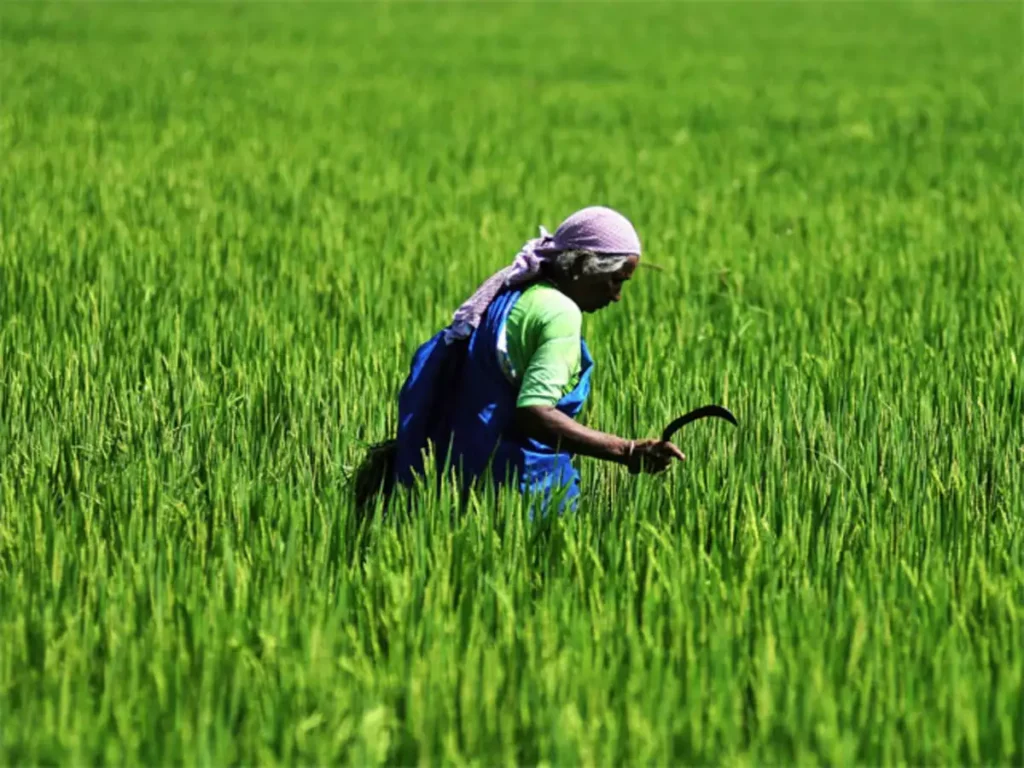Rice is one of the most important food crops in the world, especially in Asia. Rice makes up nearly 16% of the world’s calorie intake, with its consumption amounting to 520 million tons in 2022. The majority of rice production is concentrated in Asia with top 10 rice-growing countries accounting for 84% of the world’s total rice cultivation.
India, with its deep agricultural heritage, dedicates 45 million hectares to rice cultivation, highlighting the crop’s cultural and economic importance. While India has the largest area for rice farming, its productivity (2,390 kg/ha) lags behind countries like China, Vietnam, and Indonesia. With India’s population expected to reach 1.7 billion by 2050, rice demand is projected to increase by over 25%. Given the finite land resources available, increasing agricultural productivity becomes paramount for ensuring national and global food security.
Indian agriculture faces high risk due to climate change, necessitating urgent solutions to increase climate resilience in critical crops like rice. Due to the threats of global warming, paddy cultivation is expected to experience a 5-10% decrease in crop yields for every degree Celsius increase in temperature, posing substantial challenges in sustaining rice production.
Paradoxically, rice fields are also a major source of two potent greenhouse gasses – methane and nitrous oxide. Methane (CH4), responsible for 30% of global temperature rise, has 86 times the warming potential of carbon dioxide. Similarly, nitrous oxide (N2O) too has a higher potency than carbon dioxide, and extensive usage of nitrogen-based fertilizers has led to a rapid increase in nitrous oxide emissions. Rice farming accounts for about 10% of total global methane emissions, which is similar to emissions from the oil industry. China, India, and Indonesia being the largest rice producers, are also the biggest contributors to methane emissions from rice cultivation.
India is the second-largest emitter of methane worldwide (8.3% in 2022), with rice production alone contributing over 4 million metric tons. With India’s goal to reduce carbon emissions and become net zero, addressing the rice sector’s impact on emissions is crucial. Agriculture also employs nearly half of India’s workforce, so strategies for transformation in the rice sector must balance climate impact with protecting farmer livelihoods and incomes.
Increasing rice production is necessary but traditional farming methods will only exacerbate global warming. The sector needs innovative, sustainable approaches that improve yields, foster climate resilience, and reduce greenhouse gas emissions. In recent years, scientific and technological innovations have introduced strategies and solutions aimed at mitigating the climate impact of rice cultivation. However, scalability of these solutions continues to be a challenge.
Effective interventions must be simple, easily adoptable by farmers, and should deliver benefits across the value chain. The transformation of the rice cultivation sector necessitates broader technology adoption, but obstacles like negative impacts on yield, unclear return on investment, farmer resistance to change and lack of awareness hinder its progress. Additional training efforts, varied infrastructural support, and the absence of economic incentives further complicate adoption.
Technology maturation, awareness creation, and retention of incentives for farmers is the three-pronged balanced approach needed to address the above mentioned challenges effectively. Recent advancements offer promising solutions that lift the burden of change from farmers while benefiting the entire agricultural value chain. One such innovation is CleanRise, a microbial bio stimulant developed by String Bio, a Bengaluru-based startup.
CleanRise has demonstrated a 50% reduction in methane emissions and 40% reduction in nitrous oxide emissions, while increasing crop yields by 15-39%. It requires minimal application, comes at an affordable cost, and aligns with the call for sustainable and accelerated climate action in rice cultivation. Farmers can generate higher profits and gain resilience against climate stress, while brands benefit from better quality rice (higher percentage of “head rice”) and consumers get more nutrient-rich produce (~10% increase in zinc and iron).
Adopting such impactful technology can help India strengthen its rice ecosystem and achieve national priorities in food security, climate commitments, and farmer welfare. However, lack of awareness among farmers and government about recent technological advancements remains a major roadblock.
A successful shift towards sustainable, low-carbon rice cultivation requires active engagement from all stakeholders – farmers, brands, traders, government agencies, consumers, and input providers. The entire rice ecosystem needs to unite for collective action towards “Responsible Rice” – a concept that envisions rice cultivation that minimizes greenhouse gas emissions, ensures abundant high-quality produce, and enhances farmer prosperity. By addressing financial, social, and regulatory challenges through a coordinated “Responsible Rice” program, India can accelerate the adoption of sustainable technologies like CleanRise and unlock significant value for the nation. This approach not only tackles climate change but also strengthens food security and improves farmer livelihoods.
The transformation of India’s rice sector presents a unique opportunity for the country to become a global leader in sustainable agriculture. By embracing innovative solutions and fostering collaboration across the value chain, India can create a model for other nations to follow. This could position India at the forefront of climate-smart agriculture, potentially opening new export markets for its sustainably produced rice. As the world grapples with the dual challenges of feeding a growing population and mitigating climate change, India’s journey towards “Responsible Rice” could serve as a beacon of hope and a blueprint for sustainable food production in the 21st century.
The Authors are CEO and Associate -Public Policy & Research at Indiatech.org (TSIA) respectively.

